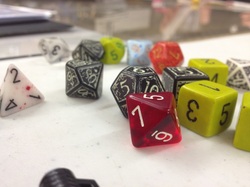 1. From Stott Stewart a. Ok I’ve you talk about this several times. But what is the ten commandments of gaming?(sic) i. Lord Flagoon’s response. Grammar aside this is a great question. Because what are the Ten Commandments of gaming? Are they the manifestation of years of gaming and roll playing? Are they the collaborations between three gamers who have all seen one, if not all, of these guidelines of basic descent human interaction broken at their prospective game table? Are they rules cast in stone brought to me by the Lord of gaming to help establish my own religion? Too the first two questions the answer is “Yes.” The last one the answer is “Maybe” only if you are willing to see me as a prophet, because Lord Flagoon is not below getting free money from people wanting to believe that he will bring them to the promised land of gaming Nirvana. (When it comes to sacrilege I’m all in.) But seriously the 10 commandments are nothing more than a list of behaviors that we believe will help assist you and your gaming group into doing what Joe asks of you every week, “Get more from your games,” because that is what gaming is about getting all the entertainment, social interaction, bragging rights, and the fun and entertaining story’s that help create long lasting friendships that will strive throughout the years. But if all you are asking for is a listing of them look no further than the following link for all your curiosities will be quenched. http://www.dungeoncrawlersradio.com/ten-commandments.html 2. From Dane Harrison a. Hey this is Dane from the Dallas gaming group. We use to email you a while back and we have ran into a small snag and are looking for advice. We are running a Ravenloft game and my players are stuck in a church that is in the middle of a graveyard. Now one of the players took something they shouldn't have in a previous excursion. Now this magical item has created a problem for the players because it is an artifact of evil and has awoken all of the dead in the cemetery to attack the players to free it from their bonds. The rogue that stole it does not know that it is magical nor do the other players. The object is masking itself so that it will not be destroyed. So the players are stuck in this old run down church it night time and there are thousands of zombies marching in to kill them. How do I save them or at least make it so they don't forever hate me! i. So… Your rouge stole something that is biting everyone in the ass. Typical rouges. Other than giving them hints that this particular item is the cause of their grief, there isn’t much you can do. As the Commandments say “Respect the Consequences of your actions.” Like going into the Underdark without any night vision abilities; when you’re in Ravenloft taking any item has the chance of being of a maligned force (I would be more surprised to find a holy item in that cursed place). If you do choose to go this route, give them a fight to end all fights. Imation the end of Halo Reach, they are held up in a church with the horde at their doors, death is imminent, but they are brave warriors ready to die in victorious battle! Another epic fight comes to mind. Like I said this is going to be a fight and they may not come out unharmed, if memory serves me rite someone very powerful didn’t survive Moria. You can give them a fighting chance if they are the clever bunch and you can leave them some make-shift traps that they can drop on the heads of the zombies. Another idea comes to mind that the magical item starts communicating to the rouge and tried to take over his body. Or the artifact attracts the, more powerful, creature that’s controlling the undead mass. If there is something I have said again and again is. “Make them earn it.” You can help, but only slightly, never have the Deus ex machine come down and make everything alright. The players will remember the fight you brought them and how they succeeded or failed. They won’t remember the king’s garrison riding up to the doors and say. “There you go. We took them all out for you. Now on to the next step in your quests you little scamps.” Then pat them on the bum send them on their marry way. That sort of hand holding I would only wish to see in a Modern Shooter. If you want to go the hand hold rout give the players a chance to break the hold and try to stand on their own. As the DM you are the story teller and the facilitator of the characters that your players are portraying. Hope this helped. On to the next. 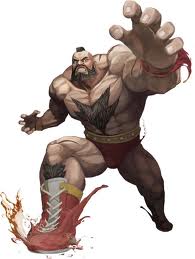 3) Max Cranston a) Hey guys this is kind of a character creation question. I am wanting to know what is the best way to create a fun character that is flawed. I have always played the tank in the group that is designed to soak up damage and I want to try something new and unique. Any ideas? i) So you want to up your gaming experience and play a fully flushed out character instead of a human meat shield? AWESOME!!! When it comes to creating a flawed character the sky is the limit. If you want to play a foppish warrior that is a bore to be around or is a complete @$ hole but everyone has to work with him because, like you said, is a damage sponge; go ahead. If your scrapping for ideas try here’s a list of some characters I thought of while weighting this: (1) mute Warrior (You would have to be completely silent and have a good story for this) (2) Bard with a sex addition (3) Anything with an addiction (sometimes the vices will be a hindrance or a godsend who knows) (4) A mage who suffers from hallucinations (5) A character with severe agoraphobia (6) A odd obsession with cats, the color purple, and has a stalker ex girl/boyfriend (7) Kleptomania (but isn’t a rouge or kinder) (8) Monk So these are but a few examples to try. Think of any sort of quark and figure how you would roll play it. The biggest rule is not to be afraid if it doesn’t work. Start our small and slowly start trying to break your comfort zones. Hope this helps.
0 Comments
Gamer forge Listener Email: Name: Devon Smart Comment: Can Cure Light Wounds be used inside an Anti-magic field? Gamer Forge Response: Hello, Devon! DCR says: No. No supernatural ability or spell (or spell-like abilities) can be used within an Antimagic Field. The Field only supresses, or delays, magic. Items like Rings of Protection are temporarily rendered useless until the person wearing or using the items leaves the area. Before you ask, this is only temporary, so the items are not destroyed. Also, before you think about trying to beat the system, two Fields do NOT cancel each other out. You can't "meta" this one. But for a nominal finder's fee, Lord Flagoon would be willing to look the other way when trying to cheat. Gamer forge Listener Email:
Name: Marcus Ryno Comment: Is there a feat (or other way, I guess) to use Dex or Con instead of Str when making melee attacks? The only time I ever make a basic melee attack is an attack of opportunity, so I guess another way to fix this would be a way of using one of my attack powers instead of basic melee for an AoO. As requested by commenters: I'm playing an unusual Monk build, and although I've not built for AoO-spamming, I do seem to end up with a lot of them, and as I've not got a high Str, that's left me missing most of those. Gamer Forge Response: When getting your sneak on, DCR says: Yes, sort of. The feat Melee Training will allow your basic attacks to be keyed into a stat other than Strength. Being a "rogue", being able to use your Dexterity in it's place would be well worth the investment of a feat. Plan your levels accordingly. *Bonus XP: Need more reasons to train your melee skills more? Try modelling your next characters after these tried and true heroes: Fezzik from The Princess Bride fought through sheer constitution, letting his size do the talking. Sherlock Holmes fought with a hefty dose of intelligence. Cain from Kung Fu used the inner light of wisdom to negotiate his trials. Finally, the penultimate badass, Snake Plissken from Escape from New York could conquer through sheer force of personality, aka "Charisma". Gamer Forge Listener Email: Name: Henry Bronson Comment: I'm confused about Rogues and Use Magic Device. I've searched the core book and the Internet for the past 4 hours and can't find the answer to my simple question. Since a Rogue doesn't have any spells, a spell list or caster level, do you have to emulate a class feature in addition to all other necessary checks to use items like scrolls and wands? Gamer Forge Response: This one doesn't need a witty intro, or a long, drawn out answer! Hooray for simplicity! When faking it until you're making it, DCR says: Wands (unless otherwise specified) don't need any skill, feat, or ability to use it. That's the whole point for wands: anyone can use them. The "Use Magic Device" skill, however, IS a class feature. The "Rogue" is one of the very few classes that can use it. The skill requires nothing more than succeeding on a check against the caster level of whomever created it. In making the check, you effectively fool the item into believing that you meet the prerequisites for using it. Handy for use on scrolls, weapons, and anyone who decides to be a douche to you. This skill opens up a whole new level of prankery. Gamer Forge Listener Email:
Name: Travis Johnson Comment: Pathfinder seems to have a few varied ways of identifying magic items and their properties, though some are used only with specific types of items. What is, if any, the default way of identifying such items? What are the specific cases ? To make this as complete as possible, other methods giving partial information about magic items (knowing it's magic but nothing more) are also welcome. I have attempte to answer this question myself with what I've found so far but I have no idea if I'm right or have covered everything. Please let me know your thoughts? Gamer Forge Response: You don't need to be a super-sleuth to figure out magical items! DCR says: The "Identify" spell is used to figure out the specifics of magic, mysterious items. Each round spent observing or meditating on the item reveals more of its abilities. Sometimes a magic sword just has a simple glowing enchantment on it, and some things have abilities that our puny human brains can't comprehend. But each round reveals something new, if there's something new to learn. The "Detect Magic" spell merely reveals the presence of a magical aura. It's not as awesome and catch-all as it sounds. Gamer Forge Listener Email: Name: Malcom Haverstock Comment: How does water affect Mage Hand? I know there are rules regarding disorientation with ray spells, and use of fire under water. But if a person wanted to, for example, grab some keys from a well, would there be obstacles to overcome for using mage hand? Gamer Forge Response: Give the mage a hand. Ha Ha! Get it? DCR says: Not really. A Mage Hand spell can reach the item, provided you can see it. The real problem is, once you have the item. The hand is incorporeal, but the item is not. If you're trying to pull it out of a thorn bush or between prison bars, it still MUST be able to fit through and not snag on something. We only bring this up so you can be a total dick at all the right times. We love you, too, Internet. *Bonus XP: When you're short on ideas when describing magic items, look no further than Buffy, the Vampire Slayer. The television show has, bar-none, the most exciting and still practical descriptions of magic and how it relates to people. Plus, you can explore a time before vampires sparkled and werewolves weren't required to go shirtless. 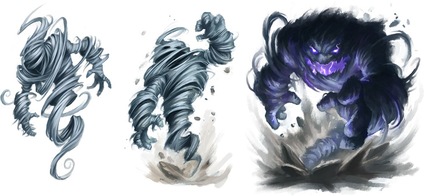 Are you ready? We said.... ARE YOU READY? Good. It's time for the Gamer Forge. Gamer Forge Listener Email: Name Spork the King Comment You know maybe this one is just as simple as it sounds and I am just making it far to difficult then it really is. So let me explain my problem, you've got, let's say, an air elemental you want to kill, and it's basically made of air. How do you kill it? Simply by hitting it with any weapon seems a little bit illogical to me - it's air and you can't kill it with a nonmagical spork... Or can you? Gamer Forge Response: We put the "mental" back into "elemental". DCR says: 1. Seek alternative solutions. What sorts of things can you do to air to neutralize it? Carry a bellows as part of your standard adventuring gear. Just suck that air elemental into the bellows and throw it wherever you wish. Use Teleport Without Error to transport it directly into the freezing vacuum of space, where air doesn't exist. If you wanna go extra "meta", freeze the room to zero degrees Kelvin. Now you have the molecules frozen completely solid and the air elemental good and truly trapped. 2. Magic weapons are the more practical solution. As it is mostly incorporeal, magic weapons are needed to damage it reliably, circumventing (get it, venting? Air? Har, har!) it's damage reduction. 3. Beware shrapnel. Loose objects laying about the room become instant weapons for an air elemental, and nothing is more humiliating than getting your day ruined by a shrimp fork to the eye. Gamer Forge Listener Email:
Name Harold Johnson Comment I’m unsure how poisons work in Pathfinder. For example: black adder venom. From the frequency of the poison, am I required to make a saving throw per minute for every six minutes? Each time I fail a save, do I take 1d2 str damage? Or do I take all the strength loss once all failed rounds are finished/frequency is over? It just looks like quite a chore referencing each round for ability score drops and I am really unclear on the rules. If I succeed at rolling a saving throw, do I no longer need to check? And to remove the poison effect (strength loss) I will need to be cured through the various tools offered? Another type is this: Sting—injury; save Fort DC 10; frequency 1/round for 6 rounds; effect sickened for 1 round; cure 1 save. I just really cannot seem to figure out how poison works. Does this sting/sickness stack each round I fail a save? Gamer Forge Response: When picking your poison, DCR says: 1. Yep. The poison runs its course through your blood for the length of time stated on the stat block. So each minute, you make a saving throw against it. Each time you fail, you take the strength damage indicated. If you lose all your strength, then you die. If the poison says it's cured by making even one saving throw, then that's when it ends. Your body is strong enough to fight of the effects. 2. Reality check: The venom of a Black adder is <expletive deleted> deadly! The only reason you get a chance to survive it is because your character is exceptionally tough. Heroically tough. Count your blessings for being heroic. 3. The great equalizer. The benefit (or gamble) of using poisons is twofold. Success means you've crippled a stronger opponent and made him/her flush for the kill. Failure leaves you vulnerable to counterattack. More so, venom can be a cost effective way for a cutthroat to do his job. Simple venoms and toxins can be crafted from plants and animals. Rattlesnake venom and mandrake root are great starting points. *Bonus XP: To give your elementals an air of extra mystique, describe them without using the word elemental. An earth elemental could be called a "golem". An air elemental can be a "will-o-wisp". A water elemental should be depicted as King Triton in "The Little Mermaid". Make the effort to not use the clinical definition so your players can be a little more immersed into the world you've created. Besides, "elemental" as a description is lame. Lame with a capital "Twilight". 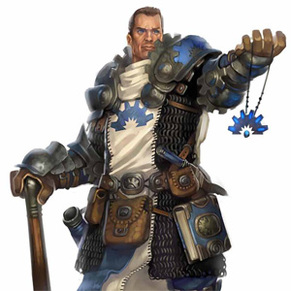 Gamer Forge Listener Email: Name Nevin Oswald Comment Hey guys I'm sitting here writing hoping you remember our little group. We are the group who'd DM wrote in about his group that went into the under-dark and made some choices and ended up stuck facing a Red Dragon and then we wrote back giving our side of things. Well i'm writing in to give a report and then ask for your help. So i'd like to say your help was great we were able to work things out and we did survive the encounter with the dragon but not in any amazing way and no dragons were hurt in the success of our escape. Basically our DM allowed our wizard to make a check and found a magical item that would allow us to transport our of the cave to one location of the wizards choosing. So the wizard cast some invisibility spells, a spell of heat resistance, and a masking spell to mask our location and sent form the dragon. We were able to rush across the distance and get to the item and teleport out moments before being found by the dragon. So now here is the problem I am facing. My character is a cleric and some of the things we have seen and faced have changed him. Not only that but some of the things that have been going on have been changing the gods themselves because they are having to do things that they normally wouldn't do to save all life. So my cleric has found himself at odd with his owe feelings and those tenets of his priesthood which he feels his Good has betrayed. Which honestly is really awesome! But some of the other players are saying that my character would accept the changes and be willing to embrace the changes in his good. Which would allow me to work more at ease with the group then opposed to some of the more chaotic actions of some of the group. My cleric is a Lawful Good alignment and my god has become more of a Chaotic Good because of the wars with the other goods and forces of evil and events that have changed him. My question is do I change with me God and accept what has happened or do I keep to my character, his tenets, and remain conflicted while searching for another God to follow? Gamer Forge Response: Maybe we should start having a word count limit on questions, seeing as we only have a set amount of time to answer them? But when it comes to a crisis of faith (or lack thereof), DCR says: 1. Remember that a set of tenets are adopted by the person in question. You have willingly accepted them to be the right way to go, and incorporate them into your identity. There is no law, no rule, no nothing, that says you have to change with your deity. Indeed, your character's choices are yours, and yours alone, so don't bend to the whims of anyone, not even your DM. 2. This crisis can be a truly great story to add to the mythos of your game. Now, it may mean that you lose favor with the deity, and will need to either select a new religion, or start down a new path. Don't see this as a failing of the game system or the DM, or even yourself. Make it a point to tell the story of how this cleric made a difficult choice and came out stronger for it. Maybe your fellow players will learn a lesson from your trials. 3. Show a little respect! Your friends around the table may want to have a bit of sympathy for your plight. There's no need to give him a hard time for it; that's just mean. Especially because if he decides to stay a "cleric", he will be responsible for healing you should you almost die. *Bonus XP: To make sure you understand just how important and awesome it is to support your local adventuring cleric, watch The Exorcist here. It's his/her duty, nay, choice to throw themselves on some landmines in order to stem the tide of corruption and evil through the land. Your cleric works hard for her money, so you better treat her right! Gamer Forge Listener Email: Name Nathan Robinson Comment I feel somewhat silly asking this, but the Wild Talents 2E rulebook keeps likening heavy armor as a "really thick eggshell" that is "all or nothing". I was under the impression for quite awhile that Heavy Armor and Interfering defends powers really were all or nothing. For example, I thought that if someone had 5 heavy armor, and an attack of width 5 hit it, nothing would get through, but if an attack of width 7 hit it, the person wearing the armor would take the full seven damage. Reading through again however, I can't find anything to support this, so it makes me think that a person wearing heavy armor 5 hit with an attack of width 7 would take 2 damage. Which interpretation is correct? Gamer Forger Response: You want our badge? You got it! DCR says: 1. A paladin, we get. Druids are a different beast altogether. In fairness, the second edition as a whole was so very different from its predecessor. But the heavy armor can be most easily compared to what the modern system would call "damage reduction" or DR. For instance, an armor rating of 5 would subtract 5 points of damage directed against the character, and the remaining two affect the character. Whereas the ThAC0 (to hit armor class zero) is the scale used to determine if an attack actually hits. Gamer Forge Listener Email: Name George Bennett Comment I don't recall seeing anything about caltrops obtained from a Bag of Endless Caltrops disappearing. Does that mean you could in theory stockpile these caltrops by regularly removing them from the bag, storing them separately, letting the bag's supply regenerate, and repeating? Gamer Forger Response: Holy caltrops, Batman! DCR says: Yes and no. Sure, the caltrops stick around. But, why? You can't exactly build a business empire out of caltrops. Think of it as a deus ex machina of needing a quick escape. It saves the character from needing to carry 50 pounds of caltrops and just carrying a five pound bag, used only when the situation calls for it. Gamer Forge Listener Email: Name Sarah Jorgenson Comment In the Redbox starter game, when you choose to be a Rogue, it says that your damage is 1D4+4. When I rolled the dice, it had all three "4" symbols facing up. Did I do 4 damage, or do I add them up to 12? Gamer Forger Response: We are so very sorry, Sarah. We tried our best not to laugh. DCR says, Its a four. The highest possible result of a die roll is the number of sides of the die. Thus, the highest roll on a d6 is a 6, the highest on a d20 is a 20, and so forth. Do not multiply any numbers that appear on the die unless your DM says otherwise. Gamer Forge Listener Email: Name Need Your Help Comment Dose the Back-stab Rogue Utility (from Heroes of the Fallen Lands) and Sneak Attack Rogue Class feature damage stack? If so, does Back-stab also get the die boost from the feat Back Stabber? If so, then this combo for a 3rd Lv rogue with Back Stabber is possible. Round 1: Preparatory Strike a target to gain CA next round. Cha mod + Int mod in damage. Round 2: Repeat Round 1 with additional Sneak Attack and Back-stab damage Cha mod + Int mod + 2d8 SA + 2d8 BS in damage. Round 3: Repeat Round 2 because in Heroes of the Fallen Land say Lv3 rogues get an addition use of Back-stab in the same encounter, but not in the same turn. So technically by turn 3 a rogue could do 3x Cha mod + 3x Int mod + 4d8 SA + 4d8 BD damage. Is this correct? Gamer Forger Response: Ahhhhh! So much math! DCR says: Yes, but you're over-thinking it. The whole point of the "backstab" and "sneak attack" is that its a great equalizer. An effective sneak attack incapacitates an enemy in one blow so the fight is over quickly. Rogues, thieves, sneaks, etc. aren't meant to fight over long periods of time. Leave that to the tanks. You're over-thinking it by lumping all the math together. It's more accurate to create the equation as a turn-by-turn breakdown. Gamer Forge Listener Email: Name Kevin Jacobs Comment OK, I'm building a Changeling ranged DPS Rogue (Thief) for a standard 4e game starting us off at level five. I have the following feat chain: Two-Fisted Shooter + Distant Advantage + Quick Draw I want to be able to dart around the battlefield and be a mobile sniper. Do you guys have any suggestions to make this build deal heavy damage and still keep his mobility? Gamer Forger Response: John Woo! DCR says: Sadly, crossbows don't get much love. Historically, the crossbow was made for ease of use, even amongst unskilled soldiers. Where the bow and arrow required actual training and a level of expertise just to be bad at it. There are only a few feats out there that can apply to crossbows, such as Weapon Specialization, Rapid Reload, and Dead-Eye. If you're absolutely hard-up to get more from a hand crossbow, invest in magic augmentation to boost your damage. Otherwise, you'd be better off focusing on accuracy and reliable damage, similar to a magic missile. On the darkness. Bonus XP: If you're thinking about crafting a finer fencer, try catching any of the film versions of The Three Musketeers. Groan all you want, geek nation, but you won't be getting the combination of "tank" and "striker" without giving up something. Start with a "fighter" class to get the stronger start in martial prowess, then sprinkle in a few levels of "rogue" or "duelist" or "assassin" or "whatever" to get at least a few heavy strikes in. Once you see how futile it is to bend your game system into impossible shapes, you can stop watching the John Malkovich version.
 Terror in it's purest form. Gamer Forge Listener Email: Name Richard Jacobs Comment I'm interested in when this constraint from vampire lore was first integrated into Dungeons and Dragons mechanics: has it been there since the first D&D vampire? Vampires are... unable to cross running water, although they can be carried over it while resting in their coffins or aboard a ship. The garlic legends I'm passingly familiar with, mirrors, crucifixes and inability to enter uninvited also. When was the first D&D vampire unable to cross running water? Is there some sort of explanation in any game-related material apart from "that's the way it is?" This came up during a pre-made adventure. In this game a vampire was entombed in an underground complex. After failing to defeat the vampire in his own tomb (I know, my characters rocked) his next move as per the module was escape out the front. Unfortunately for the author they constructed the adventure so that we had to cross a stream before we even entered the complex. In the eyes of a 3.5 (possibly earlier?) vampire this means nigh-certain containment. My characters destroyed his coffin and steal his grave dirt (leading to abuse of the phrase "I've got a jar of dirt") and the DM had him dominate people across the stream to dig him out from above the cavern, effectively sidestepping that quirky rule. After a few months, though, I haven't been able to puzzle out why that weakness even exists. Is there any official discussion of the implications of vampire weaknesses in D&D and how to work with them? Gamer Forge Response: Because Role-Playing Game, that's why. DCR says: 1. Since always. Vampires were included in the original box set in 1974. The commonly held stories were used as part of the D&D mythos from the start. It's about commonality. The term "vampire" is so ubiquitous with our culture, the image so ingrained in the collective education of the last century, that "vampire" has a history book all it's own. If D&D were to suddenly change the definition for their game, nobody would want to play it. Part of the allure of fighting Dracula is the feeling of heroism that comes from defeating Dracula. If Dracula were to suddenly resemble Chewbacca, then the prospect of defeating him isn't cool anymore. 2. You have to quantify the challenge to put it in context with a game. Defeating or otherwise successfully navigating a vampire must be worth something, or worst case scenario, failing to defeat the challenge must be worth something as well. 3. The idea of vampires having limits isn't something invented for the game. The reason a vampire has weaknesses is so we can contain it within our own imaginations. If we envision an embodiment of pure evil and temptation and it has no weakness, it crosses the boundaries into a psychosis. It becomes something that in our own minds can't be stopped. We become terrified of our own idea. Not cool. 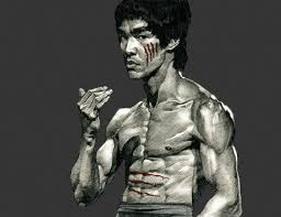 Forsooth! I have come in the name of Pelor to smite evil! Gamer Forge Listener Email: Name Stanley Finnley Comment In just about every edition of D&D (save for 4e), Paladins are required to be Lawful Good. If they stray from that, they are completely stripped of their powers. This means that evil deities can't grant powers to paladins or if they do, they go into a new class (e.g. Anti-Paladin). My question is: why? Why was it designed that paladins have to have such a strict alignment? It seems to me that it unnecessarily pigeonholes the character types and doesn't make sense in D&D world. After all, couldn't evil deities have holy warriors? I also don't understand the mechanical decision about why was it designed that an evil Paladin has to be a different class. Wouldn't this create a problem if you wanted to redeem an evil Paladin into a good one? This never really made sense to me until 4e where they just dropped the Lawful Good restriction entirely and let you have a Paladin of Vecna (or have that Paladin of Vecna become a redeemed Paladin of Pelor without having to switch classes). Gamer Forge Response: Another Paladin question!?!?!?! Are you guys trying to stump us with this subject, or is it legit confusing? DCR mercifully says: 1. The alignment isn't strict. The tenants of the deity are. "Lawful" can (and does) indicate adherence to a code. "Good" indicates that the code is good in nature. This also should not have a bearing on the personality of the Paladin in question. Put the two together, and you shouldn't get "lawful stick-up-the-butt". 2. The Paladin becomes an "Anti-Paladin" or "Blackguard" prestige class if and when they deviate from the deity's tenants or in some way lose favor with their deity. Remember, a "paladin" is an exemplar of the deity's aspects or "domains". Part of the code of conduct should include advancement and perfection of those aspects. Similar to the aspects of a "monk". 3. But in 4th edition D&D, the "Blackguard" becomes a character class from 1st level. The "good" thing isn't really a factor. You can find it in Heroes of Shadow supplement book. In all honesty, it's not very good. Seriously, it's soooo not worth it. Gamer Forge listener Email:
Name Mystery Man Comment Can a sleeping character hide at all? If they do so, do they roll Hide when they go to sleep (for hiding their sleeping spot, etc.), or do they make an opposed roll every time someone attempts to spot them? Gamer Forge Response: When trying to grab a few extra winks, DCR says: 1. Finally, an easy one. You can attempt to hide yourself before you go to sleep. That's called camouflage. But you can't do it while you're sleeping, as it is something that you must concentrate on. Bonus XP: The Paladin and Monk have a good deal in common. Indeed, the two could learn more than one thing from each other. The Monk follows an ideal along the lines of "pursue to perfection", hence the physical training regimen. Also, think of concepts like "mind over matter" and apply them to the Paladin. While you're at it, why not create your next character as a Monk, but call yourself a Paladin. Now you can see the similarities, we hope. Also, take a trip back in time by watching Enter the Dragon with Bruce Lee. A good guy following a code of honor while fulfilling the tenants of his order and questing? Yep. That's a paladin, all right!  Gamer Forge Listener Email: Name Hank Johnson Comment There are many instances in Pathfinder and other 3.5 based systems when you might need to reduce a monster below 1 or 1/2. For example, if I'm using a CR 1/2 monster from a 3.5 source in Pathfinder, I'm supposed to reduce it's CR by 1. So what do I do in this case? Reducing the CR by 1 using rote math would put me in negative territory. Or, for a more practical example, what if I want to include many weaker versions of a weak CR 1 enemy? I'd apply the CR -1 template, but then what would the CR be? Do I drop down to the next fractional CR? Or do I go in halve the CR? Note: I realize that this is partially a theorycraft question, since this situation only occurs at very low level encounters or in encounters with LOTS of low level enemies. However, it's been bugging me for awhile and I'd appreciate your input. 'Tanks! Gamer Forge Response: It's a lot of math, but DCR cracked the case... 1. Once a challenge rating drops below five levels under the group's rating, or five levels above, that challenge shouldn't be thrown at them. It's either far too weak, or much too strong. But we totally get that you gotta quantify the challenge somehow, for the sake of calculating experience and loot. 2. However, dropping the challenge rating to one quarter means that the only time it would be worth any experience reward is at first level. So this may be a great scenario if you want some first level characters to be involved in a large scale battle. 3. Without knowing the full context of why you're dropping the CR so low, it's hard to determine the actual answer. As far as we could figure, we answered your question. If we didn't, then our answer is "Knight Rider". That's right, "Knight Rider". Gamer Forge Listener Email: Name Michael Jacobson Comment I was poking around and looking at the Paladin and liked their lay on hands class feature. I, however, do not like the Paladin itself. So I was wondering if there were abilities one could acquire that work like Lay on Hands without being a paladin. Gamer Forge Response: I'm a paladin! And you can be, too! To get a little closer to your deity, DCR says: 1. The resource book, Defenders of the Faith, features a prestige class called a Hospatalier. It allows someone who doesn't have the Lay On Hands class feature to use it. In theory, a fighter with a high Charisma score could do it, as could a wizard or barbarian. So could David Hasselhoff in Knight Rider. Just saying. Gamer Forge Listener Email: Name Dallas Gaming Group [email protected] Comment I haven't been able to find a way to create a classic dwarven battlerager that is official. I want to build a dwarf that wears spiked armor, spiked gauntlets, spiked everything, that charges enemies, grabs them, punches, bites, and shakes violently to use my body and armor as a weapon. (I know there's an "Battlerager" fighter build, but it's unrelated to the classic dwarven battlerager.) Gamer Forge Response: These aren't the usual warm fuzzies that you want to share. These ones are gonna hurt! When you're trying to make the one-of-a-kind "Battlerager", DCR says: 1. Not really. There isn't a "class" that gives you everything to make what you're asking for. But, a fighter/monk combination could do it. Take your first four or five levels as a monk to increase your unarmed damage and speed. The next three or four levels should be taken as a fighter, to grant you access to the feats necessary to become a "Grapper" prestige class. Feats like Improved Grapple and Improved Trip will help immensely. A high Constitution will be more useful than a high Dexterity. You will be harm's way before anyone else and you need to be able to survive longer. Unless you're Knight Rider. KITT automatically survives everything. Its a rule. It ain't pretty, but that's how we got your Battlerager figured. Bonus XP: If you're still having trouble putting your adventurers into large scale battles, try looking into Warhammer Fantasy or Lord of the Rings RPG. Both of these have great suggestions for creating large, outnumbered battles. If you can't quite get the numbers to balance out and heroes are either outnumbered or overpowering, have them either driving KITT, or have them face KITT in battle. Also, it would be pretty sweet to have that snarky voice making quips in the middle of Lord of the Rings-type dialogue. You should do that. Guy Named Joe will personally bestow enough experience to level your character if you do. But you must provide proof of it happening. A 30-second video would do just fine. 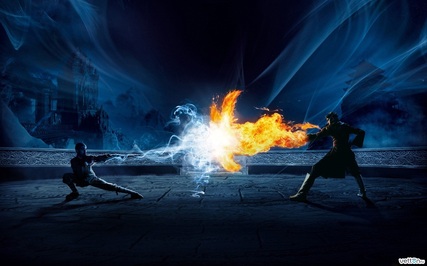 Previously, on Catacombs Talk Forum... Gamer Forge Listen Email: Name Simon Donovan Comment Gentlemen, My gaming question is this. When playing a wizard and creating magic items in 3.5 D&D is there a way to create those magic items without having to burn up experience points or if I have to atleast do it in a way that I don't have to burn a lot to do so? Thanks Gamer Forge Response: Oh, Oh! It's Magic! But it's also gonna cost you. When you're making items, DCR says: 1. Nope. It will always cost you XP. 2. But...it doesn't necessarily have to cost your own. Your DM may allow you to find a way to sacrifice someone else's XP. It's very evil, but it may be worth asking about if you're desperate to not cash in your XP. 3. If you can't sacrifice someone else, the cheapest route becomes making scrolls. They cost the least amount of your experience to make. That's why wizards begin play with the feat to do so. Gamer Forge Listen Email: Name Rick Richards Comment I'm starting to play Star Wars Saga edition and I don't want to play a Jedi or a sith. What is a good class to play and why? Gamer Forge Response: A long time ago, in a galaxy far, far away...DCR says: 1. The SW Saga Edition features five (and only five) core character classes, each balanced out so as not to overshadow each other. Jedi, Noble, Scoundrel, Scout, and Soldier. 2. Scoundrel features the most commonly used skill set, along with special Talents that negate frustrating penalties, suppress enemies' bonuses, and enhance your defenses and skills. As an added benefit, this class is rounded enough to fill in gaps that may be left open by the other, more specialized classes, like Soldier. 3. However, Noble is the underdog, here. They're not supposed to be the front line fighters, nor the "caster" specialties of the Jedi. But the special Talents will help your allies in almost any scenario. Also, the "Wealth" Talent straight up gives you money just for being alive. Just so that it's clear, let's put it on it's own line in bold, italic, underline: Free. Money. Gamer Forge Listen Email: Name Steven Broadbent Comment We are starting a world of darkness campaign. Any advise on how to run the game since this is my first time running this system? Gamer Forge Response: "World of Darkness" doesn't mean "World of Confusion". When taking on this scary world for the first time, DCR says: 1. Commonality. It doesn't really matter how much you love vampires, if nobody else in the game cares about vampires. Find the level where everyone meets as far as familiarity. If your gaming group is familiar with the movie "Monster Squad", then start in a world similar to that. When giving descriptions and examples, draw from that pool of knowledge as well. On the flip side, if a player isn't connecting to what you're offering, that player has every right to not play. Respect the player's decision to show up or not. 2. Learn the core mechanic. This would apply to learning any new game system. Before you start running, you've got to understand the core mechanics. All the nuanced stuff will come with time. If you have to look in the rulebooks just to find out how to determine success at an attack, then you quickly lose the trust and respect of the players. A GM should be regarded as an authority on the subject. 3. World of Darkness is filled to the brim with it's own lore. Tap that like you would a keg in college. Each book in the system is somewhat connected, so finding lore for you campaign setting is a breeze. It looks like a mountain when put next to each other, but remember that you can just take one and leave the rest. You've gotta put on training wheels before you can ride the ten-speed. *Bonus XP: To help get players psyched up for playing a game set in a universe closer to the real world, start with the music. If you've got a half-decent laptop loaded with music, try loading that puppy up with some tunes that might help fit the mood. Get some player input about the sorts of things they would hear in a supernatural thriller. To give that extra kick in the pants, try creating several playlists to reflect radio stations, so when characters hop into a car, have a radio station turn on and start playing. It's a little more effort to put it together, but so worth it once players begin to "get it" and feel more connected to the world that they are helping shape. For help in getting started, just turn on your radio in your own car, and scribble some quick notes on five or six random stations. Also, playing the classic Grand Theft Auto: Vice City is a great way to start. The music makes for a more personable, if not perfect, immersion experience. 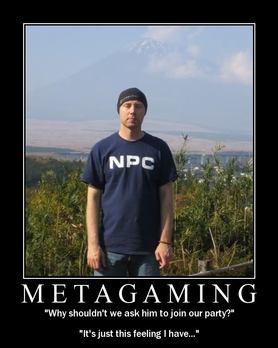 Gamer Forger Listener Email: Name: Sam Hutchinson Comment: I've got a character who needs more melee weapon damage. What kind of things can you do to increase the damage? Gamer Forge Response: When it comes to putting that extra force behind your swings, DCR says: 1. A nasty combination of getting a ridiculously high melee damage output would be combining the feats Improved Initiative, Death Blow, and Improved Trip, along with a weapon called a Ghost Head Broadsword, can raise your muscle to its upper limits. Improved Trip states that a successful trip attempt results in the character NOT having used the attack action for the trip attempt. Death Blow states you can make a coup de grace as an attack action, not a full-round action. The GHBS features a 1d10 damage with a times 3 critical multiplier and an 18-20 critical threat range. So, quick math reveals (1d10+STR+magic+feats) x 3 x (z) = OMG! Where z=number of attacks per round. A coup de grace is considered an automatic critical hit. Who says junior high math doesn't pay off? Another option requires a significant purchase or, alternatively, a great deal of looting. The epic items, Gauntlets of Relentless Might, and Headband of Perfect Excellence should get you licking your chops. The Gauntlets give you a boost of +6 to STR and CON, while the Headband give you a whopping +6 to STR, CON, and WIS. Great for monks! Because, twinking your characters, that's why. ....and players wonder why some of this stuff didn't transfer from one edition to the next. Gamer Forger Listener Email: Name: Louis Christie Comment: The Player's Handbook states that you can get "bonus spells" for certain ability scores, but does that mean more spell slots/spells per day, more spells known, or both? Gamer Forge Response: Can you spell slots? Get it? Spell? Slots? Yeah, us neither. DCR says: 1. Bonus spells gained through a high attribute do NOT grant additional spells known. Only spells per day. A "wizard" can know any number of spells that they have in their spell book, but only that many. They can't spontaneously know more. Conversely, a sorcerer has innate knowledge of spells, but cast via force of personality, not knowledge. Making a sorcerer smarter won't change anything. Also, bonus spells also doesn't grant you access to spells of levels you don't know yet. Example: a first level wizard who has bonus spells up to third level, doesn't start off knowing third level spells. Once they can cast a third level spell (at level 5, if memory serves), then they can utilize the bonus spells (per day) for their high intelligence score, thus casting more spells per day than the standard wizard. ...again, none of this grandfathered in to the fourth edition. Gamer Forger Listener Email: Name: George Stevenson Comment: A lot of the time I find that my players are using their knowledge about the game to there characters advantage even when the character would have no way of knowing certain information. Here is an example. Trolls do not regenerate when struck by acid or fire damage. A lot of times I find that my characters always carry around a vial of acid or a fire spell just in case they meet a troll. When they have never faced a troll ever in the life of their character. Another example would be when the characters find a portal that is blood red, a player will say, "That portal will take us to the Abyss!!" and BAM the surprise is gone. There's more but I'm not going to make a huge list of examples. I mean I'm really glad that my players take the time to read up on this stuff but sometimes it ruins the suspense and belief of the game, I mean how would a half Orc barbarian know that a certain marking on a wand means its a Wand of Burning Hands? My question is this: How do you get players to use character knowledge instead of player knowledge? Gamer Forge Response: The ultimate thin red line between playing and cheating: metagaming. DCR says: 1. Describe monsters as if you don't know what it is. A very common (and very easy) pitfall of gaming is players like to spend time immersing themselves in the lore of the world in which they play. It isn't good or bad, it's just something everyone does. Counterbalance this by no longer assigning the common name for the enemy the first few times they encounter it. Don't call a "gnoll" a "gnoll". Getting the players in the spirit of the world starts with the Dungeon Master getting in the spirit of the world. However, once the characters have been around for a while and survived a good deal, it's cool to let them know aspects of creatures, especially commonly encountered creatures. 2. If you feel that the metagaming crosses the line into cheating, the next step is to not let the players assume the have the advantage. Remember the old adage about "assume"? It makes an "ass" out of "u" and "me". The moment someone makes the assumption they have the advantage, they will behave as if they do. Another easy pitfall. At the early stages of the game, players assume they know exactly how to entice the goblin king out of its cave? Put the kibosh on that by saying, "Roll me a (insert relevant lore check here), please." If they succeed reasonably at the check, then they can know some of the information on the goblin. Otherwise, they don't know, and can respond with something like, "Find another option, please." Certain aspects of logic are enforceable! 3. You will never fully be able to curb it. You can't make players forget what they learned about the game unless that player is Homer Simpson, or you have a fondness for causing head trauma. But we don't judge, either way. *Bonus XP: Still feel like you're not doing enough melee damage? Try this little tidbit: the D&D 1st edition rules on an assassin sub-class allow for a special attack that can kill an enemy outright, regardless of how many hit points they have. The player has a percentage chance, based on level, of successfully using the attack. Even better, if the attack fails, he/she still deals normal sneak attack/backstab damage. A little house rule can transfer this into a more current rule system. The assassin starts with a small percent chance of killing the target, say 25 percent. Then every other level thereafter, that percentage goes up. So, around 10th level, they may have a 50 percent chance of assassinating the enemy. Now, if that doesn't whet your appetite for destruction, then maybe you start seeing a shrink. Just saying. |
The GamerForge is DungeonCrawlersRadio’s most favoritist segment of the entire show. Have you ever had a boggling rules question that no one in the group can figure out? Write in to us and we’ll help try to solve it! Are you a Game/Dungeon Master who needs help squashing animosity at the table or dissension in the ranks? Perhaps we can help!
If you are in need of help, encouragement, or an uber devious way to get a TPK, we are here to help. No matter your needs, we’ll help you get more from your gaming! The Gamer ForgeWhere Players & Game Masters can come for valuable information to level up your game! Archives
August 2013
Categories
All
|
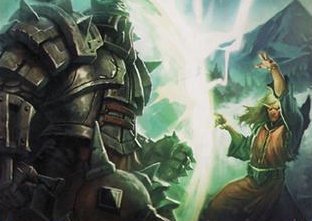



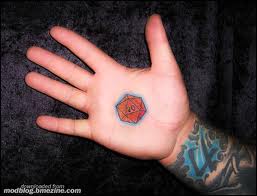
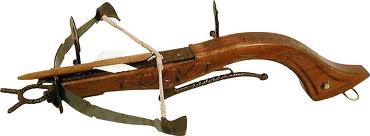
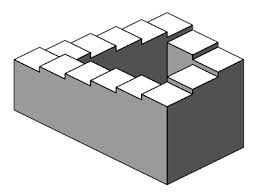

 RSS Feed
RSS Feed








